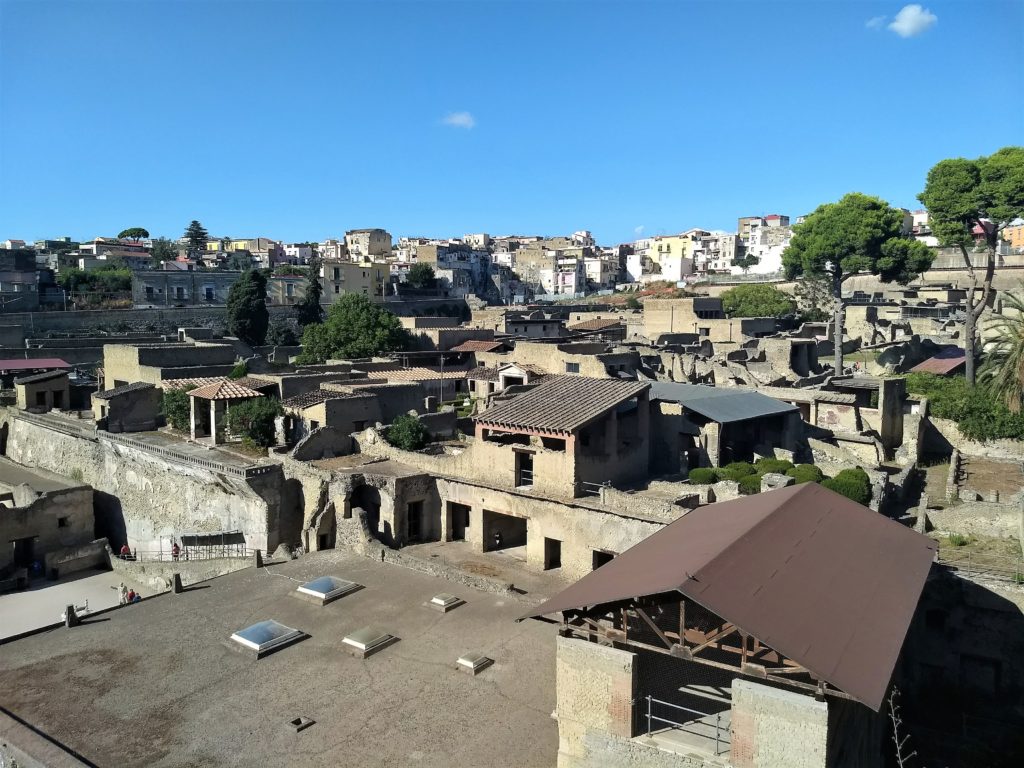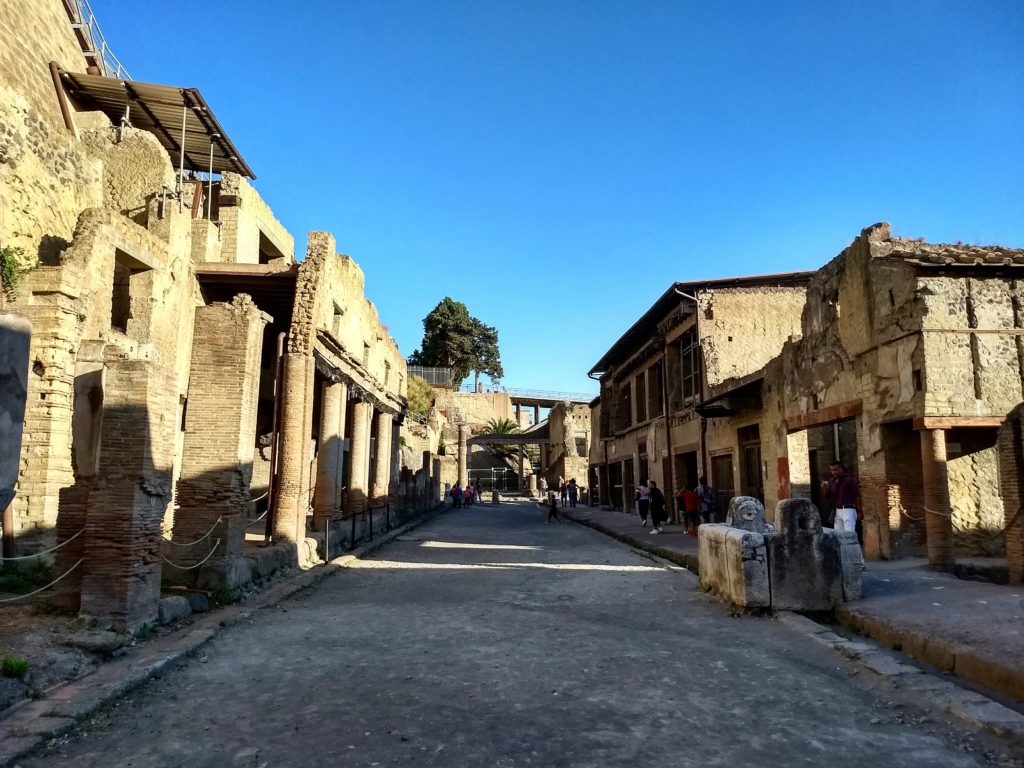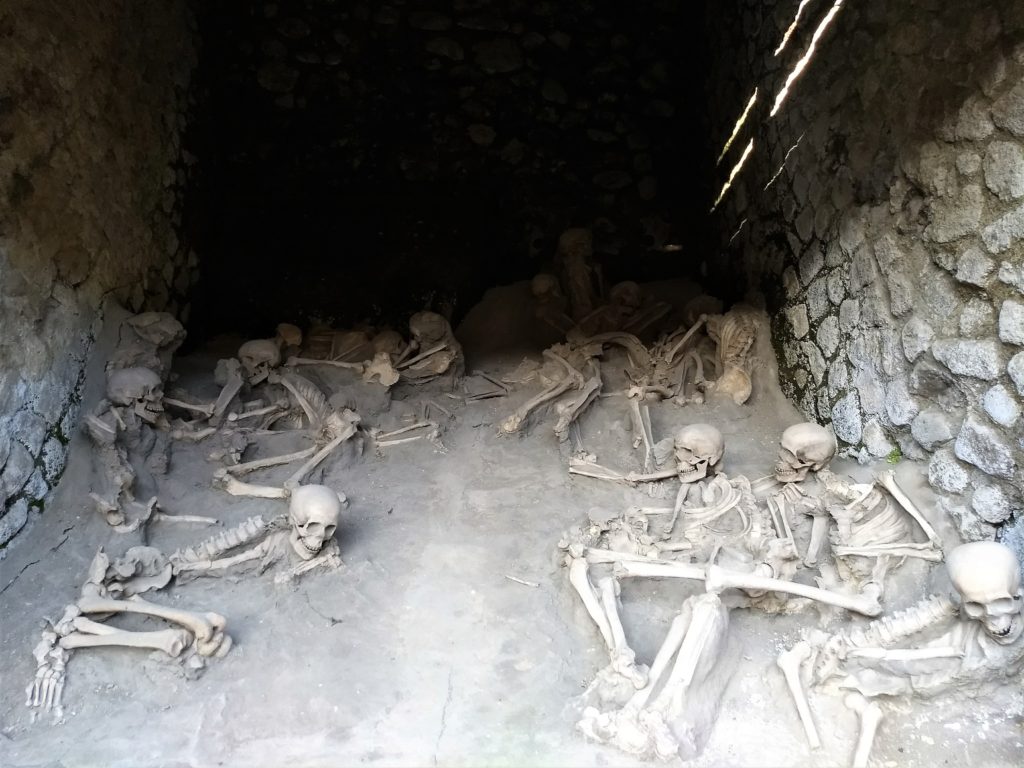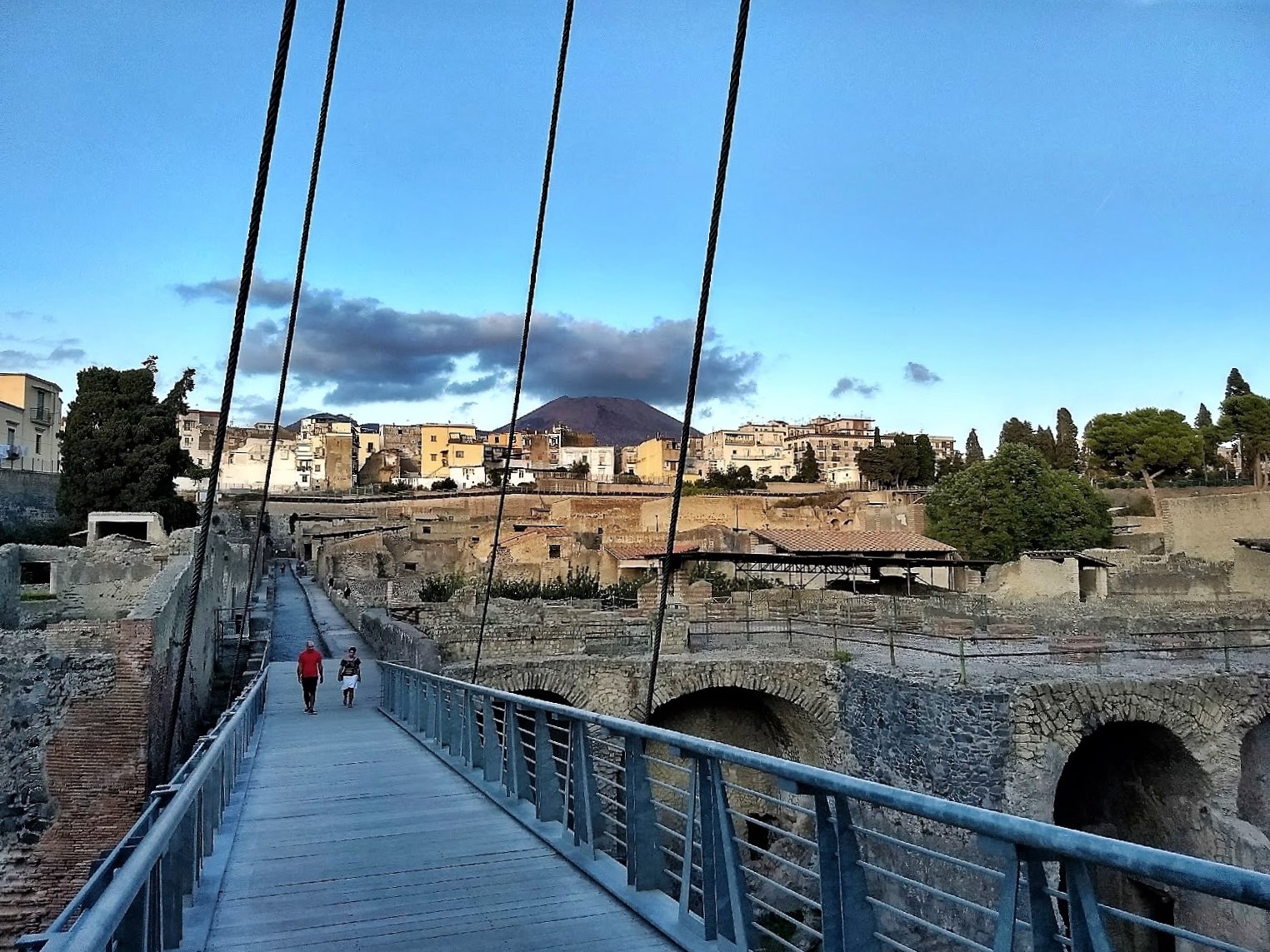A quiet mountain, not threatening at all, and linked to many beautiful legends: this is how the Vesuvio. This volcano, however, once became the protagonist of terrible eruptions, destroying entire cities. The most catastrophic was undoubtedly that of 79 AD. On that occasion the cities of Pompei, Oplonti ed Herculaneum, then remained buried under mud and rock for over a millennium.
Brief history of Herculaneum
The name of Herculaneum derives from an ancient legend according to which it was the same Hercules to found the city in the thirteenth century BC. In truth, it was most likely founded by the civilizations of the Osci or of the Etruscans between 1200 and 1100 BC After the conquest of the Greeks in the V BC, Herculaneum became one of the most important centers of the Vesuvius. Streets and buildings thus began to develop following the Hellenic urban scheme (the same as the neighboring one Neapolis). But it is with the arrival of the Romans, after a brief parenthesis with the Samnites, that Herculaneum experienced its period of greatest splendor.

Thanks to its position, the beauty of the coast and the fertility of its land, Herculaneum was transformed into a coveted tourist destination for many wealthy Romans. Spectacular villas lavishly decorated began to crowd the city, transforming it into a real holiday center for the aristocracy of the time. This at least until 79 AD when a violent eruption of nearby Vesuvius buried it under a layer of mud, rock and volcanic material. about 25 meters high.
The excavations
After the eruption of 79 there was no longer any trace of Herculaneum, hidden under meters and meters of earth mixed with mud and ash. For centuries, life continued to flow quietly over its remains, up to 1710. That year a local farmer, digging a well for his estate, found some blocks of worked marble. After some studies, followed by other excavations, it was discovered that an entire city was hidden underground. Thus began a real treasure hunt, with hundreds of archaeologists who unearthed entire buildings, streets, objects of common use and even human skeletons.

Get inspired
The current excavation area is of about 4 hectares, but according to the experts that re-emerged is only a fifth of the city of Herculaneum. The area of theancient port. Here in recent years they have been discovered hundreds of skeletons perfectly preserved. These are the remains of those who tried to escape by sea, but were unable to do so.

After passing the port, you suddenly find yourself immersed in ancient Rome with streets, marble statues and houses typical of the period. The latter, unlike those of Pompeii, present themselves smaller, but with more decorations. Many of the frescoes, mosaics and various paintings have come to us in a state of perfect conservation, so that we can admire them in all their splendor. An example is the House of Neptune and Anfritite where two highly prestigious painted marble slabs are kept. Very fascinating is also the Half Timbered House, multi-family house characterized by a balcony supported by three imposing columns along the sidewalk. While the Decumanus Maximus, the main street, is a clear example of what the great streets of the center looked like in Roman times.
But the journey among the remains of Herculaneum certainly does not stop here. As previously mentioned, the fact that it remained buried for centuries prevented the entire center from suffering the erosive effects of the centuries. All that remains is to arm yourself with comfortable shoes and a bottle of water, ready to catapult you back in time.





